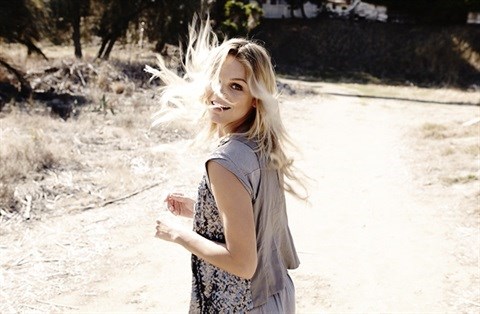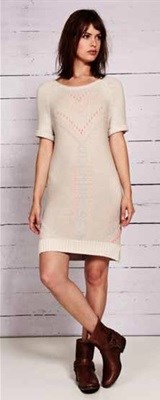
Top stories






LegalKenyan court postpones case seeking to halt Diageo's $2.3bn sale of EABL
Duncan Miriri and Emma Rumney 1 day
More news











Logic tells me that if you share a good quality image of your product along with a well-written story to a journalist who is interested in hearing about it, you will stand a far greater chance of being featured on their pages.
We all know this right? Wrong. Turns out, that after doing lifestyle PR for the better half of the last 10 years, it really is not that simple. The high-resolution image is an enigma, a swear word. It seems in fact, that it is possibly one of the most misunderstood words in the English language and something that, when requested, is unanimously met with either a blank stare or a very unconvincing nod. Add the words 'deep-etched' in front and you're stuffed.
If the brand manager confidently affirms they have an entire library of them, do not be fooled, it is a cover for they know not. In my years, I have met only a handful of PR practitioners and possibly one or two brand managers who truly understand what a deep etched high-resolution product image is and this is known to cause off-the-chart frustration from journalists and editors alike.
On a personal side-note, when writing for the industry, I am cautious not to sound like the cynic - that jaded someone who has been around a long time, no longer filled with the optimism of opportunity. It is for this reason that I don't like to get on my soapbox very often and do so with trepidation. I figure in this case, instead of ranting, turning puce with ongoing frustration, crying tears of rage and hitting my head continuously against the already dented office door, I am choosing to educate. I am choosing to get off my soapbox and to try to unpack it in minute detail, for all those who get it so very, very wrong.
And so, I ask those sparing few who do know, to spread the word! Let's educate! Let's share the recipe! Let's banish the absolute abhorrent behavior that relates to the pretty pictures of PR. So what does it all mean?
Deep etched: In real terms, this means 'cut-out'. In a non-digital world this would mean taking a pair of scissors and carefully cutting out the image from the piece of paper. In a digital sense, this enables the layout artist to put the picture on any background and next to any other product. A deep etched image will increase your chances of being published (which is the end goal).
High resolution: According to Oxford Dictionary, resolution refers to the 'detail' held within the image. Go figure that... the higher the resolution, the more the detail. So how much detail do they need? The image should be 300dpi (dots per inch) as yes, logic tells us that 300dpi a lot more dots per inch than 72dpi. It should be a minimum of 1MB (megabyte) and not so big (65MB) that it takes up the RAM on a computer and takes the better part of a week to download. Again, a well-sized image will increase the chances of being published.
Jpeg: This is the universal format for images. Yes there are psd's, pdf's, tiffs and other file formats, but to be safe, send it as a jpeg. Again, a jpeg will increase your changes of being published.
Some other useful do's and don'ts and maybe a little terminology that may trip you up:
Campaign image: This refers to the beautiful and often expensive shoot for images that are used for in-store posters, advertising etc. From a PR/media point of view, these are best used when they accompany a seasonal press release or a feature on the brand. They are never used in product lifestyle PR.
Look book images: These usually feature a model photographed on a clean backdrop in a number of different outfits. These are often used to assist with selling the ranges and are especially used on online shopping sites but they are rarely used in published product features.
Flat lays: Yes, this is another word for product image.
Logos: You are a brand manager so we understand that you love your logo more than anything. However, in the case of lifestyle PR, do not, repeat NOT, send an image with your logo splashed all over. Any self-respecting media house will not publish it as these are effectively considered adverts.
Layouts: Once again, you are a brand manager so naturally you are inclined to saturate anything and everything in your brand's look and feel. Don't. If you want it published, keep it clean, raw and with no brand fluff as only in this format is it usable to the journalist.
Prices and credits: Don't ever attach any text or prices into your image. Have you ever seen a magazine publish something like this? No, I didn't think so.
Some examples of what we mean:

1MB Credit: Yaya on PressStick.com. Look at the detail and the great shape. Always better when you can have a sense of 3 dimension.

2MB Credit: PressStick.com Yaya
A beautiful brand image is often shot on a model and on location. This image is ideal when accompanying a press release for a new season or other brand communication. This is often the one laden with logos which is to be avoided at all costs.



Photographed on a model on a clean background. To be used when sending out product/collection releases however these are not well picked up by the media and most certainly to not constitute product images.
I have one last very important point to make with regards to the high res image and that is with its delivery to the journalist.
There it is. I hope that I have been able to shed a little bit of light on a somewhat enigmatic element of PR and brand communication. If not for the good of the industry, simply for me so that PR companies like mine do not spend 30% of our time simply trying to get the correct collateral to do our jobs effectively.
After all, we live in South Africa and we all know that the success of the future requires good education.
#Watchthisspace
